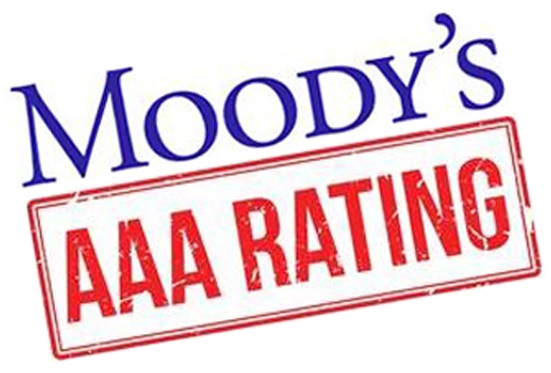Recently, Moody’s Investor Services upgraded the City of Asheville’s general obligation bonded debt credit rating from Aa1 to Aaa [sic], the highest rating they award. Standard & Poor’s, upgraded the City’s general obligation bonds from AA+ to AAA in August 2015.
This second upgrade places Asheville with some of the most financially well-managed cities in the United States. A triple-A bond rating is confirmation of the City’s sound fiscal policies and professional management.
Rating puts City of Asheville
in better position for capital improvements
“The upgrade to Aaa is based on the City’s sizeable tax base with an expanding economy despite somewhat below national average income levels, growing, robust reserves enhanced by the presence of conservative policies, [and] manageable debt position…” said the Moody’s debt report.
“The City is now rated triple-A by both of the agencies that rate the City’s publicly offered bonds and that is a huge accomplishment,” said Andrew Carter, Vice President of DEC Associates, the City’s financial advisory firm. “With the upgrade to triple-A from Moody’s Investor Service, the City is now in the company of a small group of world class, well-managed cities. This could not be accomplished without the vision and leadership from City Council and City Staff and the establishment of well-defined financial policies, financial planning and a prioritization of City goals and investments. Having the highest rating from both S&P and Moody’s will allow the City to have the best possible access to financial markets, credit products and ultimately lower borrowing costs.”
The Moody’s report stated that the City of Asheville is in a strong economic position with a stable outlook, healthy reserves, and strong financial management. This upgrade from Moody’s confirms that the City of Asheville will be able to borrow money at the lowest market rate available as the City gears up for the GO Bond Program.
“The continued adherence to the capital program and capacity established by City Council allows the City to plan for future capital needs and provides a roadmap for City Staff, citizens of Asheville and the agencies that rate the City’s financial strength, “ said Carter, “Financial management of the City, led by the City Manager Gary Jackson, and the City CFO Barbara Whitehorn, received the highest marks from both agencies and is representative of the commitment to the highest standards of financial planning, strong financial policies and fiscal soundness for the City.”

Question: What are “rating agencies?”
Answer: A credit rating agency is an independent company that evaluates the financial condition of issuers of debt instruments and then assigns a rating that reflects its assessment of the issuer’s ability to make the debt payments. Potential investors, customers, employees and business partners rely upon the data and objective analysis of credit rating agencies in determining the overall strength and stability of a company.
Q: What rating agencies have been used historically by the City of Asheville?
A: Two main agencies have been used:
Moody’s Investors Service
John Moody and Company first published “Moody’s Manual” in 1900. The manual published basic statistics and general information about stocks and bonds of various industries. From 1903 until the stock market crash of 1907, “Moody’s Manual” was a national publication. In 1909 Moody began publishing “Moody’s Analyses of Railroad Investments”, which added analytical information about the value of securities. Expanding this idea led to the 1914 creation of Moody’s Investors Service, which, in the following 10 years, would provide ratings for nearly all of the government bond markets at the time. By the 1970s Moody’s began rating commercial paper and bank deposits, becoming the full-scale rating agency that it is today.
Standard & Poor’s
Henry Varnum Poor first published the “History of Railroads and Canals in the United States” in 1860, the forerunner of securities analysis and reporting to be developed over the next century. Standard Statistics formed in 1906, which published corporate bond, sovereign debt and municipal bond ratings. Standard Statistics merged with Poor’s Publishing in 1941 to form Standard and Poor’s Corporation, which was acquired by The McGraw-Hill Companies, Inc. in 1966. Standard and Poor’s has become best known by indexes such as the S&P 500, a stock market index that is both a tool for investor analysis and decision making, and a U.S. economic indicator.
